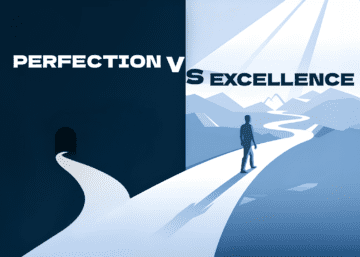
In today’s fast-paced professional landscape, the concept of a high-performance culture often evokes images of relentless productivity, intense competition, and uncompromising results. For organizations striving to maintain a competitive edge, this environment may seem like an unavoidable necessity. However, there is a profound difference between a high-performance culture driven by mutual trust and respect versus one solely focused on speed and results.
What Defines a True High-Performance Culture?
A genuine high-performance culture is built on a foundation of trust, respect, and shared accountability. It’s an environment where team members feel empowered to bring their best selves to work, share ideas without fear of judgment, and collaborate towards common goals. Creativity and innovation thrive in such spaces, not because of relentless pressure, but because individuals feel supported and valued.
This type of culture encourages open dialogue, embraces diverse perspectives, and fosters a sense of belonging. Employees feel a deep connection to their work and each other, creating an environment where excellence is not only possible but sustainable.
In contrast, a results-driven culture (more specifically a results-at-all-costs culture) often prioritizes output over well-being, leading to burnout, disengagement, and a lack of long-term sustainability. The challenge lies in recognizing the nuances between these two models and fostering an environment where excellence and humanity coexist.
The Pitfalls of a Results-at-All-Costs Culture

While a results-driven culture can yield impressive short-term gains, the long-term consequences can be detrimental to both individuals and organizations. Common pitfalls include:
Burnout and Declining Mental Health
Relentless pressure to deliver can lead to chronic stress and burnout. Employees may feel they can never truly switch off, resulting in emotional exhaustion, reduced creativity, and a decline in overall productivity. The World Health Organization identifies burnout as a significant occupational phenomenon, highlighting its impact on individual well-being and organizational outcomes.
Organizations that fail to address burnout risk losing top talent and face increased absenteeism and turnover rates. In a culture that prioritizes trust and support, however, employees are more likely to feel energized and committed to their roles.
Toxic Competition
Excessive focus on individual performance can erode trust and collaboration, fostering a cutthroat environment. This toxic competition stifles teamwork, discourages knowledge-sharing, and creates a fragmented workplace. When employees view their colleagues as adversaries rather than allies, the collective potential of the team diminishes.
By contrast, a culture built on mutual respect and shared success encourages collaboration and amplifies creativity. Teams can achieve more together than any individual can accomplish alone.
Fear of Failure
When the penalties for failure are constantly high, employees may avoid risks or innovative ideas to safeguard their positions. This fear stifles creativity and hampers an organization’s ability to adapt and grow. Innovation thrives in environments where experimentation is encouraged, and mistakes are viewed as opportunities to learn.
Leaders play a critical role in shifting this mindset. By normalizing failure as part of the growth process, they can unlock bold, transformative ideas that drive long-term success.
Redefine Success
Fast-paced cultures often exclude individuals who cannot match the intense pace, such as caregivers or those managing health conditions. Such an environment leaves valuable perspectives and talents untapped, perpetuating a narrow definition of success that prioritizes speed over substance.
High-performance cultures, on the other hand, recognize that diversity strengthens teams. By embracing varied strengths and contributions, organizations can create richer, more innovative solutions.
Shaping a Culture of Trust and Innovation

Organizations can balance high performance with humanity by fostering an environment that values people as much as results. Here’s how leaders and team members can contribute:
Cultivate Safety
Encourage open communication where team members feel comfortable expressing their thoughts, concerns, and ideas without fear of retribution. This builds trust, fosters collaboration, and unlocks creativity. Google’s research on effective teams highlights psychological safety as a critical factor for high-performing teams.
Psychological safety empowers employees to take risks, propose bold ideas, and voice dissenting opinions, all of which are essential for innovation. Leaders can create this environment by actively listening, responding with empathy, and showing vulnerability themselves.
Promote Work-Life Balance
Respect boundaries and encourage employees to prioritize their well-being. Leaders can set the tone by modeling healthy behaviors, such as refraining from after-hours communication and advocating for time off. Work-life balance isn’t just a personal issue—it’s a strategic imperative that affects productivity, engagement, and retention.
Organizations can support this balance by offering flexible work arrangements, ensuring manageable workloads, and promoting a culture where rest and recovery are valued.
Recognize Contributions
Celebrate not just the results but also the effort, creativity, and collaboration that drive success. Regular recognition reinforces a culture of appreciation and motivates continued engagement. Acknowledging the small wins along the way can build momentum and maintain morale during challenging projects.
Recognition doesn’t always have to be formal; simple gestures like a thank-you note or a shoutout in a meeting can have a profound impact. Leaders who prioritize recognition create an environment where employees feel valued and inspired to excel.
Invest in Growth
Provide opportunities for professional development and mentorship. Supporting employees’ growth shows a commitment to their long-term success, fostering loyalty and satisfaction. Development opportunities signal to employees that their organization believes in their potential and is willing to invest in their future.
Mentorship programs, training sessions, and access to industry conferences are just a few ways organizations can prioritize growth. These initiatives not only enhance individual capabilities but also strengthen the organization’s overall expertise. Additionally, give others their own tools to encourage growth. For example, the Be-Do-Have model demonstrates that how we show up (Be) determines our ability to make the best choices (Do) in order to achieve our goals (Have), and can help you (and others) organize and achieve your objectives effectively.
The Key to Innovation and Performance
Actively work to create a workplace where diverse perspectives are valued. We all see things through our individual filters of life experience and fixed beliefs, so varied perspectives are essential to gaining a full 360-degree view of challenges and opportunities.
By creating a culture where everyone feels seen and heard, organizations can unlock the full potential of their teams.
Thriving in a Balanced High-Performance Culture

Whether you’re navigating this culture as an individual contributor or shaping it as a leader, success lies in finding balance. Employees can prioritize their well-being, advocate for boundaries, and focus on meaningful outcomes rather than hours worked. Leaders, on the other hand, can design workplaces that inspire excellence while honoring the humanity of their teams.
Tips for Employees
- Set Boundaries: Clearly define your limits and communicate them with your team. Prioritize tasks that align with your goals and values, and don’t be afraid to say no when necessary.
- Focus on Growth: Embrace a growth mindset and seek opportunities to learn and improve. Whether through formal training or on-the-job experiences, continuous learning keeps you adaptable and resilient.
- Build a Support Network: Surround yourself with colleagues, mentors, and friends who uplift and support you. True connection provides encouragement and perspective during challenging times.
Tips for Leaders
- Lead with Empathy: Understand the unique needs and challenges of your team members. By showing empathy, you build trust and foster a sense of belonging.
- Model the Behavior You Want to See: Demonstrate the values and behaviors you expect from your team, whether it’s taking breaks, celebrating successes, or admitting mistakes.
- Create Opportunities for Collaboration: Encourage cross-functional projects and team-building activities that strengthen relationships and promote knowledge-sharing.
Moving Forward with Purpose

As we step into 2025, it’s time to redefine what high performance truly means. Sustainable success isn’t about pushing harder or faster—it’s about fostering an environment where people can thrive, innovate, and collaborate without sacrificing their well-being or values.
At Hallett Leadership, we specialize in creating workplace cultures that prioritize trust, respect, and sustainable performance. Explore how our leadership development and career management services can help you build a thriving organization and achieve remarkable outcomes. Together, we can redefine high performance and cultivate a healthier workplace culture.




